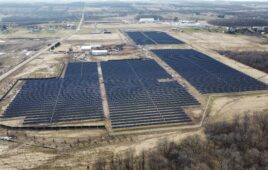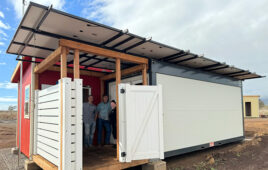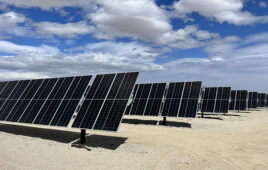Earthjustice has filed a complaint with the Federal Energy Regulatory Commission (FERC) on behalf of SEIA challenging a rule that prohibits renewables from providing ancillary services. Ancillary services help grid operators maintain a reliable electricity system, balance supply and demand, ensure reliability during extreme weather events and help the system recover after a power system outage.
Midcontinent Independent System Operator (MISO) is the only FERC jurisdictional grid operator to explicitly prohibit wind, solar and battery hybrid resources from providing ancillary services. MISO serves 45 million people in 15 states and Manitoba. The amount of energy produced from wind and solar is expected to increase significantly in the MISO region in the coming years. Wind, solar and battery hybrid resources have proven they can provide ancillary services. The temporary prohibition was instituted in 2011 by MISO and never revisited, the complaint seeks to lift this blanket prohibition.
“Regional transmission authorities should not restrict the services that renewables can provide,” said Aaron Stemplewicz, Earthjustice attorney. “FERC must order MISO to reform the current tariff provisions and business practices manual to allow wind and solar resources to participate fully and equitably in MISO’s wholesale market. Earthjustice will also challenge any attempts to strip wind, solar and battery hybrid resources from providing ramp capability. Any backsliding will be rigorously challenged with regard to the eligibility of renewable resources to provide all the services they are capable of providing.”
Ancillary services are critical components of ensuring the stability and reliability of the electric grid, as well as enabling the integration of renewable energy sources with variable output. Allowing wind, solar and battery hybrid resources, known as dispatchable intermittent resources, to be eligible to provide ancillary services could lower overall system costs, and could make the grid more reliable and resilient to extreme weather and climate disasters.
“For the last decade, the MISO has been discriminating against renewable generators, and it’s time that FERC corrects the record and gives renewables a fair shot,” said Melissa Alfano, director of energy markets and counsel at SEIA. “The fact is, the grid is changing, and energy markets need to keep up. Renewable assets like solar, storage, and wind have more than proven themselves as reliable, and we need to recognize the full scope of their benefits if we want to rapidly decarbonize in the next 10 years.”
MISO plans to file a request with FERC to remove ramp capability eligibility for renewable resources as well. Ramp capability refers to the ability of a power system to quickly increase or decrease its output to accommodate changes in electricity demand. Ramp shortages are the most common cause of short-term scarcities and price spikes.
News item from SEIA





“Wind, solar and battery hybrid resources have proven they can provide ancillary services. The temporary prohibition was instituted in 2011 by MISO and never revisited, the complaint seeks to lift this blanket prohibition.”
It has also been pundited, MISO should be dissolved into local or regional CCAs and interconnect regions to allow shuttling energy from wind and solar PV resources to the Northeastern U.S. particularly in the winter months. The east coast would probably fare better by constructing very large regional redox flow batteries or use something like iron/air flow batteries that can be designed for (days) of energy storage. Form Energy could replace many natural gas and even coal fired plants as standby reserve with something like 100 hours of stored energy that can be dispatched and replenished from wind and solar PV or even run nuclear plants at the most efficient generation level and store any overgeneration for later dispatch. Mechanical energy storage like the hydrostor concept can take overgeneration and store it as highly compressed liquid air to use later in the year. This type of (A-CAES) technology would do well by becoming a serial output of nuclear plants year around with incremental overgeneration stored for months to offset seasonal generation and grid load needs for days and possibly for (months) if designed ‘big enough’. Which begs the question, just how large of a facility would a hydrostor ESS be to contain some 100GWh to 1TWh of energy storage? The paradigm is no longer “burning fuel” and “standby” reserve, but to grab overgeneration and time shift for later dispatch. The concept of storing energy long term and then using in place transmission infrastructure to “shuttle” energy from one wholesale energy resource to another wholesale energy resource would be the way to set up the “day ahead” energy market.